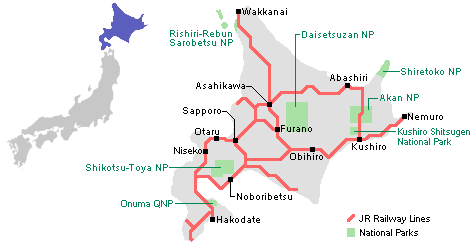
Hokkaido is the second largest, northernmost and least developed of Japan's four main islands.
Hokkaido's weather is harsh in winter with lots of snowfall, below zero temperatures and frozen seas, while in summer, it does not get as hot and humid as in the other parts of the country.
With its unspoiled nature, Hokkaido attracts many outdoor lovers, including skiers and snowboarders in the colder seasons and hikers, cyclists and campers from June to September.
Furano and Biei are towns in the center of Hokkaido, known for their pleasant and picturesque rural landscapes. The best time to visit is July, when the lavender fields are in bloom. During winter, Furano turns into a popular downhill and cross country skiing resort.
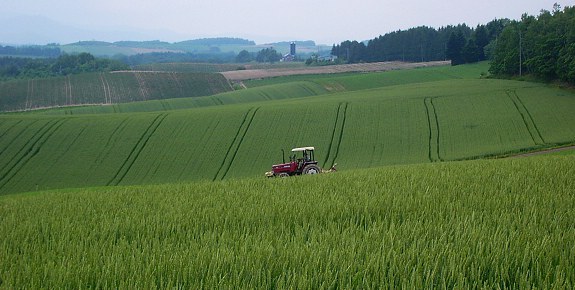
Hokkaido's weather is harsh in winter with lots of snowfall, below zero temperatures and frozen seas, while in summer, it does not get as hot and humid as in the other parts of the country.
With its unspoiled nature, Hokkaido attracts many outdoor lovers, including skiers and snowboarders in the colder seasons and hikers, cyclists and campers from June to September.
| Cities and Resort Towns | ||||||||||||||||||||||||||||||||||||||||||||||||||||||||||||||||||||||||
| ||||||||||||||||||||||||||||||||||||||||||||||||||||||||||||||||||||||||
| National Parks | ||||||||||||||||||||||||||||||||||||||||||||||||||||||||||||||||||||||||
|

Niseko is the most famous ski resort in Japan, known for tons of light powder snow, its spectacular back country, and a large amount of foreigners, especially Australians who are responsible for popularizing the resort with foreign travelers in recent years.
The Niseko resorts have plenty of long, wide runs in addition to backcountry skiing. The backcountry can be accessed from special gates at the resorts, through resort tours and helicopter tours. There is also backcountry on Yotei Mountain, a nearly perfect volcanic cone, which can be seen from Niseko.
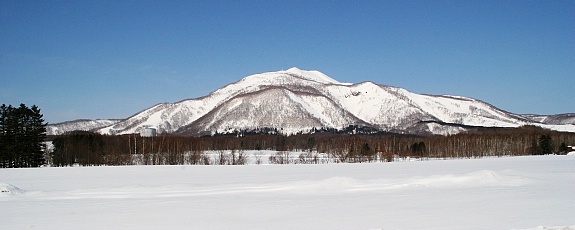
Niseko Annupuri Mountain
The Niseko resorts have plenty of long, wide runs in addition to backcountry skiing. The backcountry can be accessed from special gates at the resorts, through resort tours and helicopter tours. There is also backcountry on Yotei Mountain, a nearly perfect volcanic cone, which can be seen from Niseko.

Niseko's resorts are all located on Niseko-Annupuri Mountain. The three major resorts are Grand Hirafu, Niseko Village (formerly known as Higashiyama) and Annupuri. They are connected with each other at the top of the mountain, while shuttle buses connect them at the base. The Niseko All Mountain Pass gives access to all three resorts for 4900 yen per day.
Grand Hirafu is the largest of the resorts and the only one with a sizable town at its base. Hirafu Town has many hotels, holiday homes and an interesting range of restaurants and bars with an active nightlife. An evening stroll about town will take you past many places packed with foreigners.
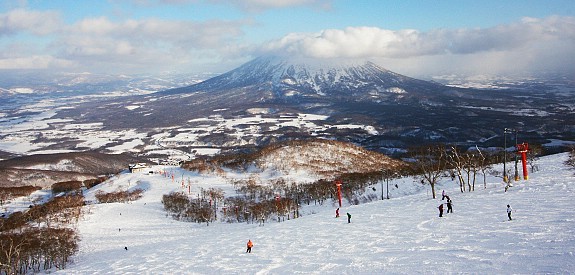
Mount Yotei, seen from the slopes of Hirafu
Grand Hirafu is the largest of the resorts and the only one with a sizable town at its base. Hirafu Town has many hotels, holiday homes and an interesting range of restaurants and bars with an active nightlife. An evening stroll about town will take you past many places packed with foreigners.

Hirafu Town is very foreigner friendly, and it is almost like visiting a foreign country within Japan. You will find that many restaurants offer English menus by default and local convenience stores offer a wider range of imported foods than elsewhere in Japan.
Niseko Village and Annupuri resorts, while lacking towns, have hotels and homes at their bases. The actual town center of Niseko is located further from the resorts and is not a convenient base for skiing.
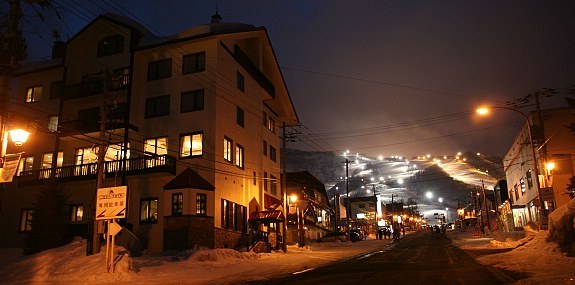
Hirafu by night
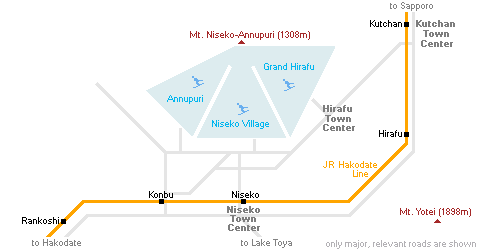
How to get there
Access by bus is more convenient than access by train, because buses directly stop at the ski resorts, while the train stations are located several kilometers away from the ski resorts.
By bus
Multiple companies operate buses between Sapporo's city center and Niseko and between Sapporo's Shin-Chitose Airport and Niseko. The one way trip along either route takes about 2.5 to 3 hours and costs 2300 yen. In the Niseko area, the buses stop at the three major ski resorts of Hirafu, Niseko Village and Annupuri.
The bus companies include Chuo Hokkaido Bus, Donan Bus, Good Sports Whiteliner and Hokkaido Access Network. They offer various ski discount packages, which combine the bus round trip with lift tickets at competitive prices.
By train
From mid December to late February, there are two "Niseko Ski Express" limited express trains between Sapporo, Kutchan and Niseko Stations. The one way trip takes about two hours and costs around 4500 yen.
Around the year, there are also infrequent local and rapid train connections between Sapporo and Kutchan Stations, most of which require a transfer of trains at Otaru. With a direct "Niseko Liner" rapid train or a favorable transfer at Otaru, the one way trip takes only slightly longer than by limited express, but costs only 1790 yen.
All the trains between Sapporo, Kutchan and Niseko are fully covered by the Japan Rail Pass, Hokkaido Rail Pass and Hokkaido Free Pass.
Kutchan Station rather than Niseko Station is the region's public transportation hub. From Kutchan Station, there is roughly one bus per hour to Hirafu (15 minutes), with some buses continuing to Niseko Village (30 minutes) and Annupuri (45 minutes).
By car
By car, you can reach Niseko from Sapporo or Sapporo's New Chitose Airport in about two hours. Rental cars are available at the airport and in the city center. Roads in Hokkaido can be covered by snow during winter.
Public transportation within the Niseko area
There are hourly shuttle buses between Hirafu and Annupuri resorts via Niseko Village resort, which can be used for free by holders of the Niseko All Mountain Pass. Furthermore, there are buses between Kutchan Station and Hirafu (15 minutes, 380 yen), with some buses continuing to Niseko Village (30 minutes, 570 yen) and Annupuri (45 minutes, 690 yen).
Noboribetsu Onse
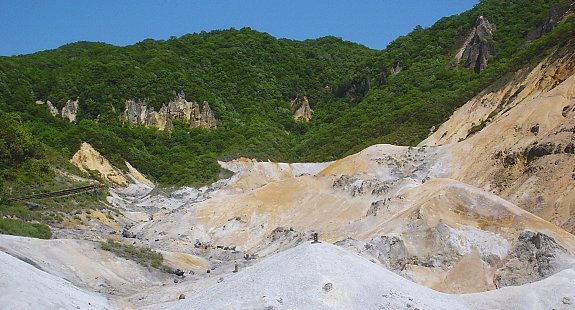
Noboribetsu Onsen is Hokkaido's most famous hot spring resort. A large amount of Noboribetsu's many types of hot spring water surfaces in the spectacular Jigokudani or "Hell Valley" just above the resort town. Noboribetsu is part of Shikotsu-Toya National Park.
Niseko Village and Annupuri resorts, while lacking towns, have hotels and homes at their bases. The actual town center of Niseko is located further from the resorts and is not a convenient base for skiing.


Passes:
| seko All Mountain Pass | |||
| The Niseko All Mountain Pass includes access to all areas of the Niseko Grand Hirafu, Niseko Village and Annupuri resorts. | |||
Resorts:
| Niseko Grand Hirafu | ||||||
| Grand Hirafu is the largest of the three resorts, and as such it has the most variety of runs. Its second base, Hanazono, is located to the west of Kutchan Town. | ||||||
(2010 Season from Nov 20, 2010 to May 8, 2011) | ||||||
| 15 minutes by bus from Kutchan Station | ||||||
| 10 kilometers from Kutchan Town Center | ||||||
| Niseko Village | ||||||
| Niseko Village (formerly known as Niseko Higashiyama) is located in between Grand Hirafu and Annupuri resorts, and has the Hilton Niseko Village hotel located at its base. | ||||||
(2010 Season from Dec 1, 2010 to May 5, 2011) | ||||||
| 30 minutes by bus from Kutchan Station | ||||||
| 6 kilometers from Niseko Town Center | ||||||
| Niseko Annupuri | ||||||
| Annupuri is the west most of the resorts and is not quite as steep as the other two. | ||||||
(2010 Season from Nov 23, 2010 to May 5, 2011) | ||||||
| 45 minutes by bus from Kutchan Station | ||||||
| 8 kilometers from Niseko Town Center | ||||||
By bus
Multiple companies operate buses between Sapporo's city center and Niseko and between Sapporo's Shin-Chitose Airport and Niseko. The one way trip along either route takes about 2.5 to 3 hours and costs 2300 yen. In the Niseko area, the buses stop at the three major ski resorts of Hirafu, Niseko Village and Annupuri.
The bus companies include Chuo Hokkaido Bus, Donan Bus, Good Sports Whiteliner and Hokkaido Access Network. They offer various ski discount packages, which combine the bus round trip with lift tickets at competitive prices.
By train
From mid December to late February, there are two "Niseko Ski Express" limited express trains between Sapporo, Kutchan and Niseko Stations. The one way trip takes about two hours and costs around 4500 yen.
Around the year, there are also infrequent local and rapid train connections between Sapporo and Kutchan Stations, most of which require a transfer of trains at Otaru. With a direct "Niseko Liner" rapid train or a favorable transfer at Otaru, the one way trip takes only slightly longer than by limited express, but costs only 1790 yen.
All the trains between Sapporo, Kutchan and Niseko are fully covered by the Japan Rail Pass, Hokkaido Rail Pass and Hokkaido Free Pass.
Kutchan Station rather than Niseko Station is the region's public transportation hub. From Kutchan Station, there is roughly one bus per hour to Hirafu (15 minutes), with some buses continuing to Niseko Village (30 minutes) and Annupuri (45 minutes).
By car
By car, you can reach Niseko from Sapporo or Sapporo's New Chitose Airport in about two hours. Rental cars are available at the airport and in the city center. Roads in Hokkaido can be covered by snow during winter.
Public transportation within the Niseko area
There are hourly shuttle buses between Hirafu and Annupuri resorts via Niseko Village resort, which can be used for free by holders of the Niseko All Mountain Pass. Furthermore, there are buses between Kutchan Station and Hirafu (15 minutes, 380 yen), with some buses continuing to Niseko Village (30 minutes, 570 yen) and Annupuri (45 minutes, 690 yen).
Noboribetsu Onse

Noboribetsu Onsen is Hokkaido's most famous hot spring resort. A large amount of Noboribetsu's many types of hot spring water surfaces in the spectacular Jigokudani or "Hell Valley" just above the resort town. Noboribetsu is part of Shikotsu-Toya National Park.
| Noboribetsu and surroundings | |||||||||||||||||||||
| |||||||||||||||||||||
| Other Nearby Attractions | |||||||||||||||||||||
|
Sapporo ("important river flowing through a plain" in Ainu language) is the capital of Hokkaido and Japan's fifth largest city. Sapporo is also one of the nation's youngest major cities. In 1857, the city's population stood at just seven people.
In the beginning of the Meiji Period, when the development of Hokkaido was started on a large scale, Sapporo was chosen as the island's administrative center and enlarged according to the advice of foreign specialists. Consequently, Sapporo was built based on a North American style rectangular street system.
Sapporo became world famous in 1972 when the Olympic Winter Games were held there. Today, the city is well known for its ramen, beer, and the annual snow festival held in February.
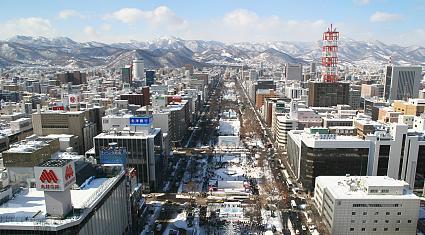
Odori Park
Sightseeing Spots
In the beginning of the Meiji Period, when the development of Hokkaido was started on a large scale, Sapporo was chosen as the island's administrative center and enlarged according to the advice of foreign specialists. Consequently, Sapporo was built based on a North American style rectangular street system.
Sapporo became world famous in 1972 when the Olympic Winter Games were held there. Today, the city is well known for its ramen, beer, and the annual snow festival held in February.

Sightseeing Spots
|
|
| ||||||||||||||||||
|
|
| ||||||||||||||||||
|
|
| ||||||||||||||||||
| |
Otaru is a harbor city, half an hour northwest of Sapporo by train. Its beautiful canal area and interesting herring mansion make Otaru a pleasant one day trip from Sapporo or a nice stop en route to or from the Shakotan Peninsula.
Otaru Canal (Otaru Unga) used to be a central part of the city's busy harbor in the first half of the 20th century, when large vessels had to be unloaded by smaller ships, which then transported the goods to warehouses along the canal.
The canal became obsolete, when modern dock facilities allowed for direct unloading of larger vessels. Thanks to a citizens' movement, however, a part of the canal was beautifully restored in the 1980s instead of being landfilled, while the warehouses were transformed into shops, cafes, museums and restaurants.
The canal makes for a pleasant scroll during the day, when various artists present their works to the passing tourists, and it is very romantic in the evening, when the gas lamps are lit.
Ferries from Niigata and Maizuru on Honshu arrive at Otaru Port.
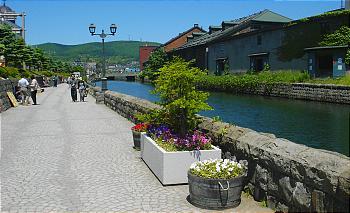
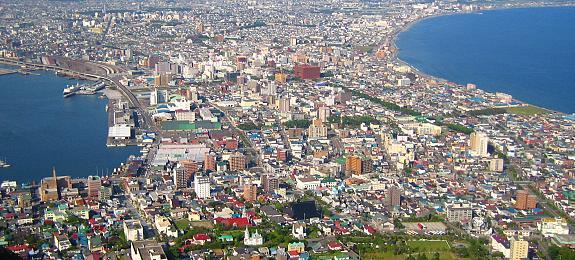
Otaru Canal (Otaru Unga) used to be a central part of the city's busy harbor in the first half of the 20th century, when large vessels had to be unloaded by smaller ships, which then transported the goods to warehouses along the canal.
The canal became obsolete, when modern dock facilities allowed for direct unloading of larger vessels. Thanks to a citizens' movement, however, a part of the canal was beautifully restored in the 1980s instead of being landfilled, while the warehouses were transformed into shops, cafes, museums and restaurants.
The canal makes for a pleasant scroll during the day, when various artists present their works to the passing tourists, and it is very romantic in the evening, when the gas lamps are lit.
Ferries from Niigata and Maizuru on Honshu arrive at Otaru Port.

|

Hakodate is Hokkaido's third largest city, located at the island's southern tip. Hakodate is best known for the spectacular views to be enjoyed from Mount Hakodate (see picture above) and its delicious, fresh seafood.
As one of the first Japanese harbor cities to be opened to international trade after the country's era of isolation, Hakodate has experienced notable influence from overseas, and the foreign population's former residential district and a Western style fort are among its main tourist attractions.
Onuma Park, a quasi national park with beautiful, island dotted lakes, is located only half an hour north of Hakodate and is a worthwhile side trip from the city or a nice stop on the journey between Hakodate and Sapporo.
Central Hakodate
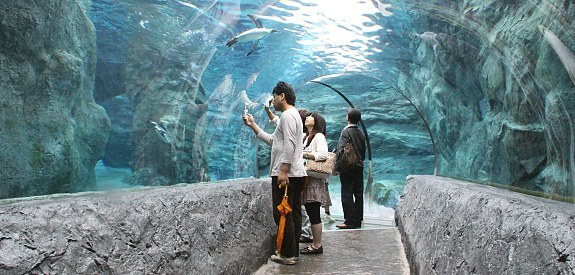
Underwater tunnel of the penguin enclosure at Asahiyama Zoo
As one of the first Japanese harbor cities to be opened to international trade after the country's era of isolation, Hakodate has experienced notable influence from overseas, and the foreign population's former residential district and a Western style fort are among its main tourist attractions.
Onuma Park, a quasi national park with beautiful, island dotted lakes, is located only half an hour north of Hakodate and is a worthwhile side trip from the city or a nice stop on the journey between Hakodate and Sapporo.
Central Hakodate
|
|
| ||||||||||||||||||
| | |

Located in the center of Hokkaido, Asahikawa is the island's second largest city after Sapporo. The city is not known as a leading tourist destination, but its zoo, Asahiyama Zoo, is among Japan's best and most popular. The local noodle dish, Asahikawa Ramen, is also quite well known.
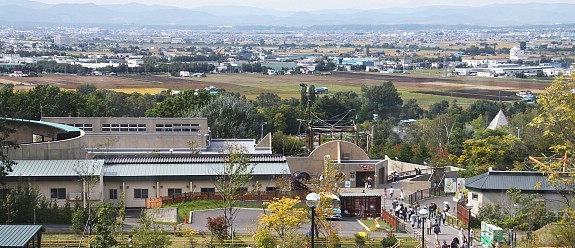
Asahiyama Zoo and the plain of Asahikawa

Asahiyama Zoo is a very popular zoological garden just outside of central Asahikawa City in the middle of Hokkaido. Its popularity lies in the enclosures which allow visitors to observe the animals from various angles, many of which are unique to Asahiyama Zoo.
Highlights include a glass tunnel through the penguin pool that allows visitors to observe the birds' underwater flights, and small glass domes in the middle of the polar bear and wolf enclosures that can get visitors right among the animals. The zoo was also one of the first to organize penguin walks in winter. Work on new enclosures and improvements to existing ones is constantly ongoing.
Animals on display include native wildlife from Hokkaido, including deer, eagles, cranes and (now extinct) wolves, as well as various animals from across the world, such as polar bears, apes, big cats and giraffes. If possible, try to visit the zoo outside of weekends and holidays to reduce the crowds.
Rusutsu Resort
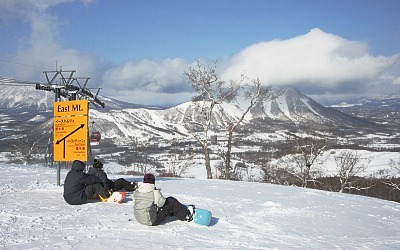
Rusutsu West Mountain seen from East Mountain
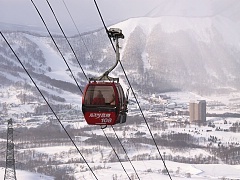
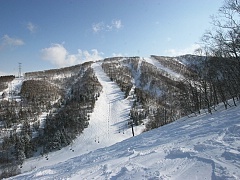
How to get there
From Sapporo:
From December to early April, multiple buses per day, including the Good Sports White Liner, Donan buses (which continue on to Niseko or Lake Toya) and Hokkaido Access Network buses, operate between Sapporo and Rusutsu Resort.
The one way trip takes two hours and costs approximately 2000 yen. Reservations are required. Buses leave from JR Sapporo Station and several major hotels in the city. Packages including lift tickets and round trip bus tickets are available.
Outside of winter, only Donan Bus operates seven round trips per day between Sapporo and Lake Toya, which stop at Rusutsu along the way.
From New Chitose Airport:
Multiple buses per day, including the Good Sports White Liner, the Donan Bus White Dolphin (which continues on to Niseko) and Hokkaido Access Network buses, operate between Sapporo's New Chitose Airport and Rusutsu. The one way trip takes about two hours and cost approximately 2000 yen. Reservations are required. Packages including lift tickets and round trip bus tickets are available.
Most of the above mentioned buses operate from December to early April. There are no buses outside of winter.
From Lake Toya (Toyako):
Donan buses between Lake Toya and Sapporo stop in Rusutsu along the way. The one way trip between Lake Toya and Rusutsu takes 45 minutes and costs 1120 yen. There are seven buses per day throughout the year, and reservations are required.
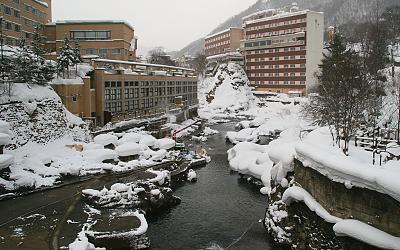
Jozankei onsen town in the winter
Besides being an onsen destination, Jozankei is a popular fall colors destination. Visitors in the fall come to see the brilliantly colored Mount Asahidake to the east of the town, or to view the autumn leaves from the walking trails along Toyahira River. The best time to see the leaves is usually mid October.
Iwato Kannondo is a unique temple in central Jozankei, as most of the temple is located in a cave. Built for road workers who were killed during the construction of a tunnel, the temple's cave is 120 meters long with 33 statues of Kannon (Japanese Buddhist deity of mercy and compassion) placed at intervals along the way.
How to get there
From Sapporo Station Bus Terminal, take the Jotetsu Bus number 7 or 8 for Jozankei Onsen. Buses depart two or three times an hour and cost 750 yen for a one way ticket. The trip takes about 75 minutes.
Alternatively, you can catch Jotetsu Bus number 12 from Makomanai Station, the terminal station of Sapporo's Namboku Subway Line. From Makomanai Station, the one way trip to Jozankei Onsen takes 45 minutes and costs 600 yen. There are buses every 30 to 60 minutes.
Hours and Fees
Iwato Kannondo Temple
Hours:7:00 to 20:00
Admission:300 yen
Abashiri
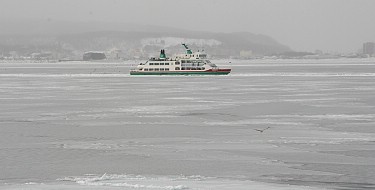
Drift Ice (Ryuhyo)
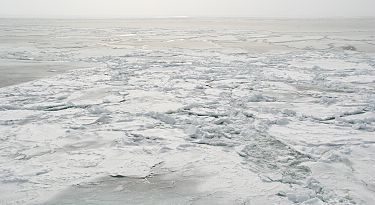
Located on a similar geographical latitude as Portland (Oregon) and Venice (Italy), the Sea of Okhotsk coast of Hokkaido is the northern hemisphere's southernmost region to see drifting sea ice.
The sea ice typically reaches the coast around Abashiri in mid to late January and disappears again by late March to mid April. The best time to view it is usually around the second half of February.
While drift ice can be observed along the entire Sea of Okhotsk coast from Wakkanai to the Shiretoko Peninsula, it gets thickest around Abashiri. Due to global warming, the amount and thickness of the drift ice has decreased quite considerably since the late 1980s.
Aurora Ryuhyo Tour One of the best and easiest ways to see the drift ice is from the Aurora sightseeing boats, which operate daily from mid January to early April from Abashiri Port (multiple departures per day, advance reservation possible). The cruises take about one hour and cost 3300 yen per person.
The drift ice can also be observed from the coast. A popular way to do so is from the trains between Abashiri and Shiretoko-Shari Stations. The nostalgic "Ryuhyo Norokko" and the "Ryuhyo Tokkyu Ohotsuku no Kaze" with panorama windows, are two special trains operated along the coast during the ryuhyo season.
The science behind the sea ice, a wide screen introductory movie and some of the small animals living below the ice, are introduced in the Okhotsk Ryuhyo Museum on Mount Tento in Abashiri.
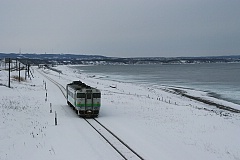 Train near Kitahama Station
Train near Kitahama Station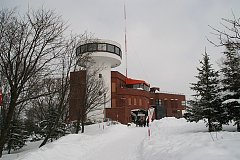
Ryuhyo Museum How to get there
A loop bus, operated by Abashiri Bus, connects central Abashiri with the Aurora boat terminal (10 minutes, 230 yen from Abashiri Station) and the Okhotsk Ryuhyo Museum (15 minutes, 310 yen from Abashiri Station). The buses operate every 30-60 minutes.

Aurora Drift Ice Tours
Hours: 9:00 to 15:00 (January)
8:00 to 16:30 (February and March)
Closed: April to December
Admission:3300 yen
Okhotsk Ryuhyo Museum
Hours: 9:00 to 16:30 (November to March)
8:00 to 18:00 (April to October)
Closed: December 29 to January 5
Admission:520 yen
Highlights include a glass tunnel through the penguin pool that allows visitors to observe the birds' underwater flights, and small glass domes in the middle of the polar bear and wolf enclosures that can get visitors right among the animals. The zoo was also one of the first to organize penguin walks in winter. Work on new enclosures and improvements to existing ones is constantly ongoing.
Animals on display include native wildlife from Hokkaido, including deer, eagles, cranes and (now extinct) wolves, as well as various animals from across the world, such as polar bears, apes, big cats and giraffes. If possible, try to visit the zoo outside of weekends and holidays to reduce the crowds.
Rusutsu Resort

Rusutsu Resort is considered one of the best ski resorts in Hokkaido. It has a large ski area that covers three mountains, each having a variety of long runs with a good mix of groomed trails, great powder and tree runs. It is located close to Lake Toya (Toyako) and is just on the other side of Mount Yotei from Niseko.
A large hotel complex sits at the center of the resort, consisting of the highrise Rusutsu Tower, the North and South Wings, the Highland Lodge and several trailside log cabins. A monorail connects the buildings with each other. A few independently run pensions can also be found in the nearby town center of Rusutsu.
Besides skiing, Rusutsu Resort offers numerous other attractions, including restaurants and shops, pool facilities and hot spring baths, as well as places catering to foreigners such as the Cricket Pub sports bar. Summer activities include golf and an amusement park with over 60 attractions and 8 roller coasters.
A large hotel complex sits at the center of the resort, consisting of the highrise Rusutsu Tower, the North and South Wings, the Highland Lodge and several trailside log cabins. A monorail connects the buildings with each other. A few independently run pensions can also be found in the nearby town center of Rusutsu.
Besides skiing, Rusutsu Resort offers numerous other attractions, including restaurants and shops, pool facilities and hot spring baths, as well as places catering to foreigners such as the Cricket Pub sports bar. Summer activities include golf and an amusement park with over 60 attractions and 8 roller coasters.


| Rusutsu Resort | ||||||
| Description | A foreigner friendly ski resort with good powder and a variety of long runs makes Rusutsu one of the best ski resorts in Hokkaido. | |||||
| Season | (2010 Season from Nov 20, 2010 to Apr 10, 2011) | Lifts | ||||
| Tickets | full day | Rentals | ski | |||
| half day | 6 hour pass | 4300 yen | board | |||
| nighter | clothes | |||||
| Access | bus/train car | 90 minutes by bus from Sapporo or New Chitose Airport. 30 minutes by car from Niseko Ski Resort. | ||||
From Sapporo:
From December to early April, multiple buses per day, including the Good Sports White Liner, Donan buses (which continue on to Niseko or Lake Toya) and Hokkaido Access Network buses, operate between Sapporo and Rusutsu Resort.
The one way trip takes two hours and costs approximately 2000 yen. Reservations are required. Buses leave from JR Sapporo Station and several major hotels in the city. Packages including lift tickets and round trip bus tickets are available.
Outside of winter, only Donan Bus operates seven round trips per day between Sapporo and Lake Toya, which stop at Rusutsu along the way.
From New Chitose Airport:
Multiple buses per day, including the Good Sports White Liner, the Donan Bus White Dolphin (which continues on to Niseko) and Hokkaido Access Network buses, operate between Sapporo's New Chitose Airport and Rusutsu. The one way trip takes about two hours and cost approximately 2000 yen. Reservations are required. Packages including lift tickets and round trip bus tickets are available.
Most of the above mentioned buses operate from December to early April. There are no buses outside of winter.
From Lake Toya (Toyako):
Donan buses between Lake Toya and Sapporo stop in Rusutsu along the way. The one way trip between Lake Toya and Rusutsu takes 45 minutes and costs 1120 yen. There are seven buses per day throughout the year, and reservations are required.

Jozankei Onsen is located inside Shikotsu-Toya National Park between the high cliffs of the Toyohira River. The town is only one hour from Sapporo, making it a popular side trip from the city for both residents and tourists. As a result, Jozankei is very developed compared to other, smaller onsen towns in Hokkaido.
The onsen waters of Jozankei were discovered in 1866 and the town now has dozens of ryokan, restaurants and shops catering to hot spring tourists. Many ryokan offer day visitors entrance to their baths for a fee of 500 to 1500. A small waterfall called Yunotaki, and the public foot baths in town, are also fed by the hot spring water.
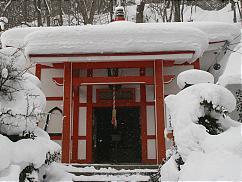 Iwato Kannodo Temple
Iwato Kannodo Temple 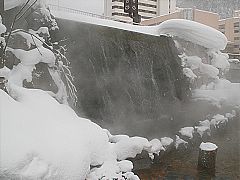
Yunotaki Waterfall
The onsen waters of Jozankei were discovered in 1866 and the town now has dozens of ryokan, restaurants and shops catering to hot spring tourists. Many ryokan offer day visitors entrance to their baths for a fee of 500 to 1500. A small waterfall called Yunotaki, and the public foot baths in town, are also fed by the hot spring water.
 Iwato Kannodo Temple
Iwato Kannodo Temple 
Iwato Kannondo is a unique temple in central Jozankei, as most of the temple is located in a cave. Built for road workers who were killed during the construction of a tunnel, the temple's cave is 120 meters long with 33 statues of Kannon (Japanese Buddhist deity of mercy and compassion) placed at intervals along the way.
How to get there
From Sapporo Station Bus Terminal, take the Jotetsu Bus number 7 or 8 for Jozankei Onsen. Buses depart two or three times an hour and cost 750 yen for a one way ticket. The trip takes about 75 minutes.
Alternatively, you can catch Jotetsu Bus number 12 from Makomanai Station, the terminal station of Sapporo's Namboku Subway Line. From Makomanai Station, the one way trip to Jozankei Onsen takes 45 minutes and costs 600 yen. There are buses every 30 to 60 minutes.
Hours and Fees
Iwato Kannondo Temple
Hours:7:00 to 20:00
Admission:300 yen
Abashiri

| Central Abashiri | |||||||||||||||||||||
| |||||||||||||||||||||
| Side trips from Abashiri | |||||||||||||||||||||
|

Located on a similar geographical latitude as Portland (Oregon) and Venice (Italy), the Sea of Okhotsk coast of Hokkaido is the northern hemisphere's southernmost region to see drifting sea ice.
The sea ice typically reaches the coast around Abashiri in mid to late January and disappears again by late March to mid April. The best time to view it is usually around the second half of February.
While drift ice can be observed along the entire Sea of Okhotsk coast from Wakkanai to the Shiretoko Peninsula, it gets thickest around Abashiri. Due to global warming, the amount and thickness of the drift ice has decreased quite considerably since the late 1980s.
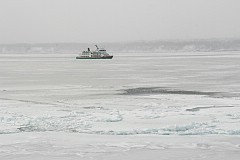 | 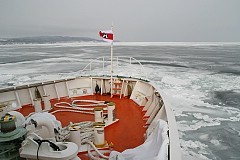 |
The drift ice can also be observed from the coast. A popular way to do so is from the trains between Abashiri and Shiretoko-Shari Stations. The nostalgic "Ryuhyo Norokko" and the "Ryuhyo Tokkyu Ohotsuku no Kaze" with panorama windows, are two special trains operated along the coast during the ryuhyo season.
The science behind the sea ice, a wide screen introductory movie and some of the small animals living below the ice, are introduced in the Okhotsk Ryuhyo Museum on Mount Tento in Abashiri.
 Train near Kitahama Station
Train near Kitahama Station
A loop bus, operated by Abashiri Bus, connects central Abashiri with the Aurora boat terminal (10 minutes, 230 yen from Abashiri Station) and the Okhotsk Ryuhyo Museum (15 minutes, 310 yen from Abashiri Station). The buses operate every 30-60 minutes.

Aurora Drift Ice Tours
Hours: 9:00 to 15:00 (January)
8:00 to 16:30 (February and March)
Closed: April to December
Admission:3300 yen
Okhotsk Ryuhyo Museum
Hours: 9:00 to 16:30 (November to March)
8:00 to 18:00 (April to October)
Closed: December 29 to January 5
Admission:520 yen

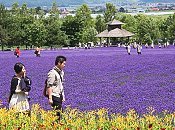
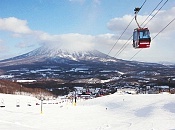
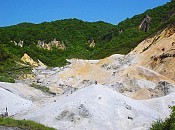
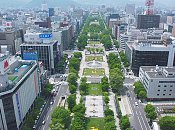
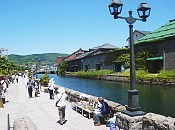
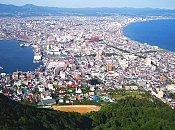
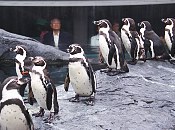
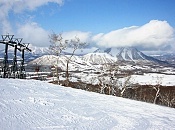
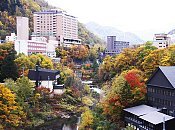
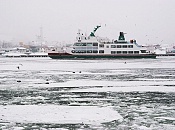
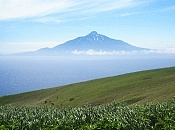
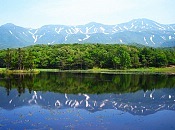
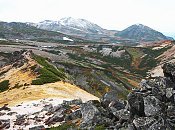
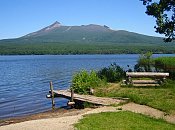
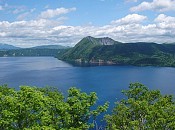
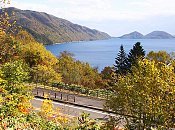
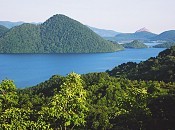
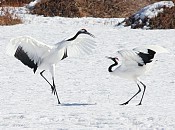
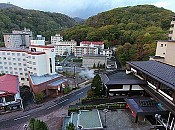
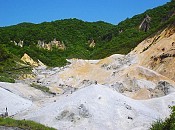
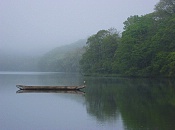
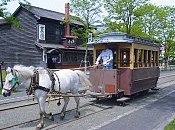
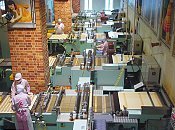
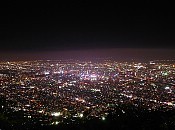
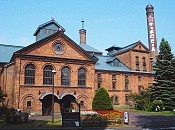
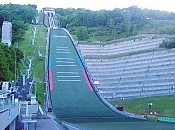
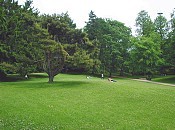
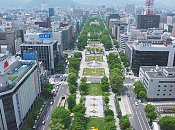
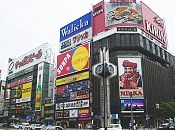
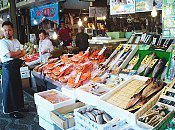
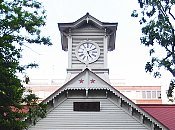
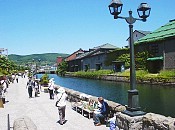
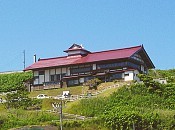
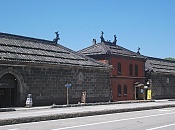
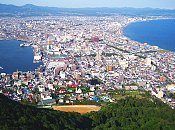
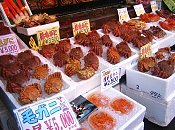
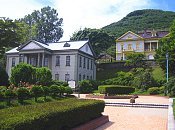
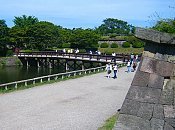
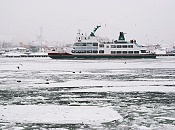
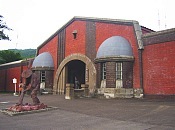
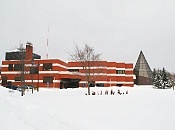
沒有留言:
張貼留言